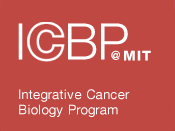| Title | Receptor tyrosine kinases fall into distinct classes based on their inferred signaling networks. |
| Publication Type | Journal Article |
| Year of Publication | 2013 |
| Authors | Wagner, JP, Wolf-Yadlin, A, Sevecka, M, Grenier, JK, Root, DE, Lauffenburger, DA, MacBeath, G |
| Journal | Sci Signal |
| Volume | 6 |
| Issue | 284 |
| Pagination | ra58 |
| Date Published | 2013 Jul 16 |
| ISSN | 1937-9145 |
| Abstract | Although many anticancer drugs that target receptor tyrosine kinases (RTKs) provide clinical benefit, their long-term use is limited by resistance that is often attributed to increased abundance or activation of another RTK that compensates for the inhibited receptor. To uncover common and unique features in the signaling networks of RTKs, we measured time-dependent signaling in six isogenic cell lines, each expressing a different RTK as downstream proteins were systematically perturbed by RNA interference. Network models inferred from the data revealed a conserved set of signaling pathways and RTK-specific features that grouped the RTKs into three distinct classes: (i) an EGFR/FGFR1/c-Met class constituting epidermal growth factor receptor, fibroblast growth factor receptor 1, and the hepatocyte growth factor receptor c-Met; (ii) an IGF-1R/NTRK2 class constituting insulin-like growth factor 1 receptor and neurotrophic tyrosine receptor kinase 2; and (iii) a PDGFRβ class constituting platelet-derived growth factor receptor β. Analysis of cancer cell line data showed that many RTKs of the same class were coexpressed and that increased abundance of an RTK or its cognate ligand frequently correlated with resistance to a drug targeting another RTK of the same class. In contrast, abundance of an RTK or ligand of one class generally did not affect sensitivity to a drug targeting an RTK of a different class. Thus, classifying RTKs by their inferred networks and then therapeutically targeting multiple receptors within a class may delay or prevent the onset of resistance. |
| DOI | 10.1126/scisignal.2003994 |
| Alternate Journal | Sci Signal |
| PubMed ID | 23861540 |
| Grant List | P50 GM068762 / GM / NIGMS NIH HHS / United States R01 CA096504 / CA / NCI NIH HHS / United States R21 CA126720 / CA / NCI NIH HHS / United States RC1 HG005354 / HG / NHGRI NIH HHS / United States U54 CA112967 / CA / NCI NIH HHS / United States |
